Overview
SASEC ROAD CONNECTIVITY PROJECT (GRANT NO-0400(BHU))
FUNDED BY ASIAN DEVELOPMENT BANK (ADB)
BRIEF PROJECT SUMMARY:
The South Asia Sub-Regional Economic Cooperation (SASEC) is established to have Regional Transport Development in South Asia, funded by ADB. The overall SASEC road connectivity Project is under the Department of Roads, MoWHS.
However, the following three components of the Project are under Phuentsholing Thromde, funded through Grant No-0400 (BHU). The total Grant out lay for the following three components of the project in the Thromde is USD is 9.38 million, (USD 2.13 million for Design & supervision – consultancy services and USD. 7.25 million for civil works for the three components, viz. USD 2.4 million for MDP, USD 4.5 million for Northern by-pass road and USD. 0.35 million for LCS). The Project timeline is end of 2019.
- Mini Dry Port (Budget Owner: Department of Trade)
- Northern Bypass Road at Phuentsholing (Budget Owner: Department of Engineering Services, MoWHS)
- Allay Land Custom Station (Budget Owner: Department of Engineering Services, MoWHS)
Phuentsholing Thromde is the Executing and Implementing Agency (EA/IA) for these three project components.
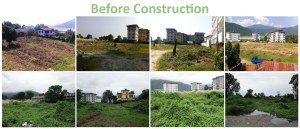
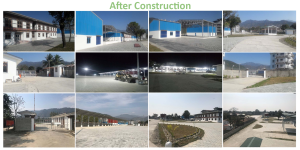
mINI DRY PORT
FUNCTION AND OBJECTIVES
A Dry Port is an inland inter-modal terminal directly connected by road or rail and operating as a centre for the transshipment cargo to inland destinations.
- To improve trade facilitation and to encourage one window services
- Encourage efficient and sustainable tax collection
- Divert the heavy traffic completely from core city area.
Facilities under Mini dry port
The Mini Dry Port in Phuentsholing provides essential facilities for efficient cargo handling and trade operations. It includes secure warehouses, customs clearance zones, container storage, parking areas, weighbridges, and office spaces for logistics and customs officials, ensuring smooth import and export processes.
northern bypass road
BACKGROUND & OBJECTIVES
The construction of Northern Bypass Road, commonly known as NBR was envisaged by the Royal Government of Bhutan (RGoB) sometime in late 1990s and early 2000s to divert the heavy traffic from outskirt of core town area. Alignment studies and preliminary designs were carried out. However, no concrete decisions were made on the finalization of the alignments and the detailed designs, probably due to lack of fund to implement the project. The proposed alignment entailing two major bridges over Omchu, apart from the existing Old doubled laned Omchu Bridge, was put on hold for quite sometime.
Now the final alignment of the road is as depicted in the map beside.
In 2010, Thromde on its own initiative, through consultancy services, carried out the design of two bridges over Omchu, one at lower end (near YDF Building) and the second one opposite Crocodile farm, as a follow up of earlier govt’s initiative to construct NBR project. Due to budget constraint under the RGoB, Thromde, upon the support from ADB, constructed the lower four lane bridge near YDF in the year 2017-2019.
Simultaneously, for augmentation of the existing Road (single lane) to four lane from Gate No.2 till RBA bend with, yet another major bridge over Omchu, at its upstream, Thromde kept exploring the budgetary support and could secure the funding from the Asian Development Bank, to carry out detailed design and implementation of the project. The fund of USD 4.5 million was assured by the ADB in July, 2015, as a part of South Asia Sub-Economic Cooperation, Road Connectivity Project (SASEC,RCP). The funding is totally a “Grant”.
To implement this project, ADB, for the first time, assigned the Phuentsholing Thromde, (the Local Government), both, as the Executing Agency as well as the Implementing Agency (EA/IA), which, otherwise, usually, the EA rests either at the Department or the Ministry levels.
PROJECT
For ease of managing the project effectively and to fast track the progress, the NBR project of 2.0 Km four lane road, including 120mtr. major bridge Over Omchu, opposite RBA bend was divided into two Packages, viz. NBR-I and NBR-II.
Thus, after finalizing all the detailed design, drawing, cost estimates, etc. and completing the procurement processes, the NBR-I package was started for physical implementation from 1/09/2017, with the contract duration of 24 Months. Package I consists the road works only.
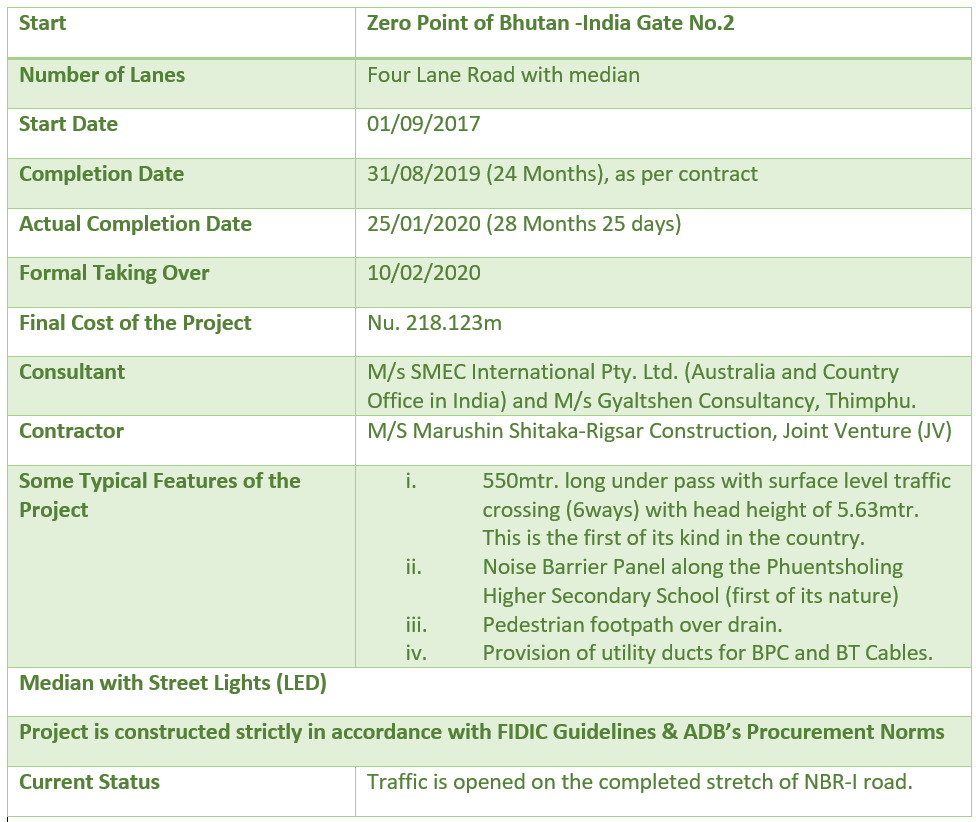
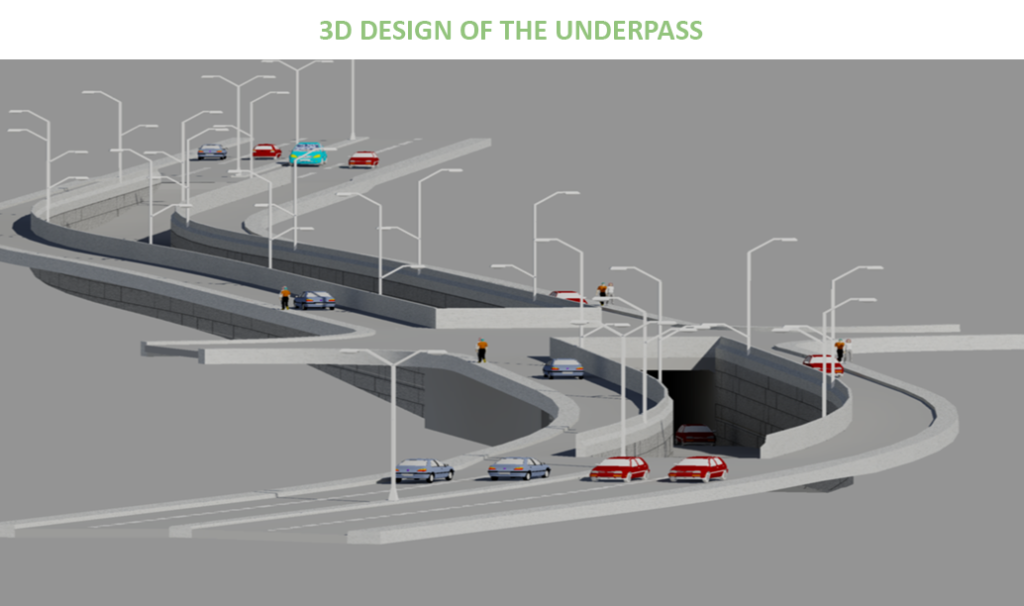
challenges & lesson learnt
- Construction of heavy duty-Reinforced Cement Concrete Wall (RCC walls) at the Underpass area, at a depth of 8 mtr. plus below the ground surface was big challenge with continuous seepage of ground water.
- Challenge to obtain road corridor of 18 mtr. Right of Way, particularly at the GREF area and other locations-could resolve the matter amicably, through constant dialogue and cordial consultations.
- Resistance from some section of property owners at the vicinity of the road corridor, fearing that their property are going to be affected, however, convinced the property owners through constant dialogue and discussions explaining them the benefits and opportunities that the project would bring to them once completed.
- Big challenge in shifting the makeshifts Weekly Vegetable Market from erstwhile location, i.e. (near RSTA Premise, where it was falling into the road corridor) to the present-day Integrated Vegetable Market, (IVM) – shifting of vegetable market was done on timely manner to IVM, having modern day facilities, without affecting the livelihood of the vendors and their businesses.
- Construction process was immensely challenged due to presence of underground utility cables such as Bhutan Power and Bhutan Telecom Cables- would have cost millions of ngultrum to the project for their shifting, if otherwise, project was to compensate them, however, such tasks could be negotiated through discussions and dialogue with the concern organizations to shift/align the UG cables at bare minimum cost. Thromde’s underground water supplies lines and Sewerage lines did pose corresponding challenges.
- While implementing and managing this project it is learnt and experienced that, in future, while handling such projects, EA/IA should institute a sound, in-house, technical team, comprising experienced and qualified national experts (if required on hiring basis) to manage the project, though the carrying out of investigation works related to the project, preparation of detailed design, drawings, cost estimates, etc. (DPR), if the project is of complex nature should be outsourced with JV partners of International experts.
NOTE:
- NBR-I terminates in front of Crocodile Farm and thereafter NBR Package II starts. Progress on package II is at advanced stage. Its completion will be updated at later date.
Write up by: D C Dhimal, Project Co-ordinator, Pling Thromde.
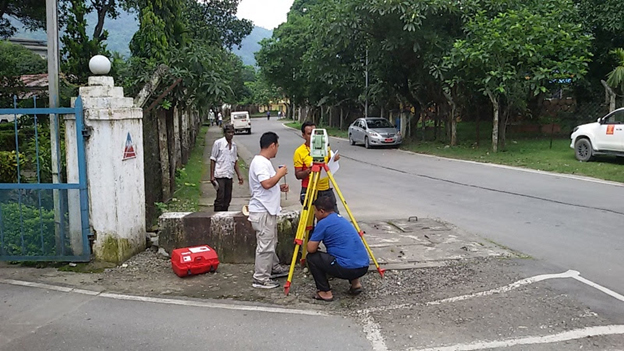
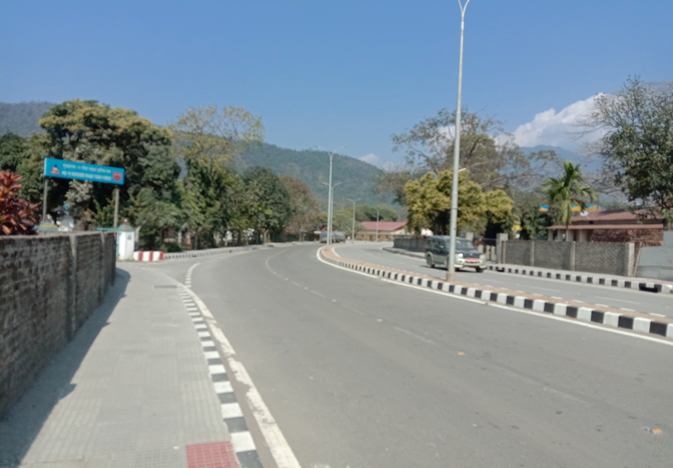
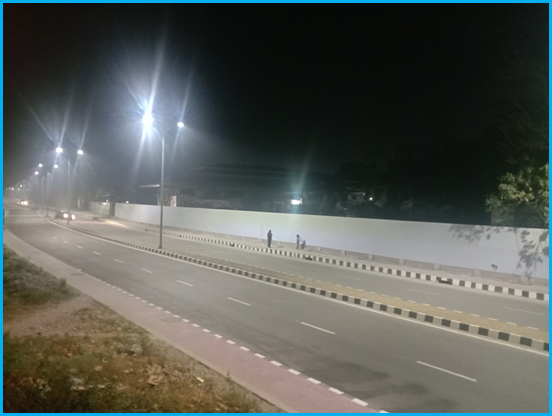
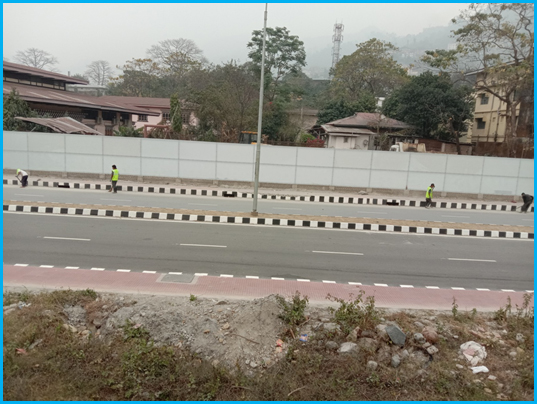
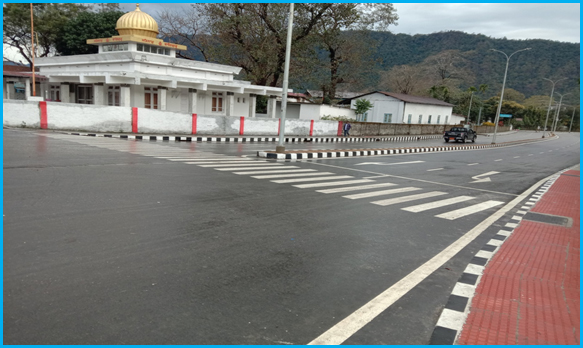
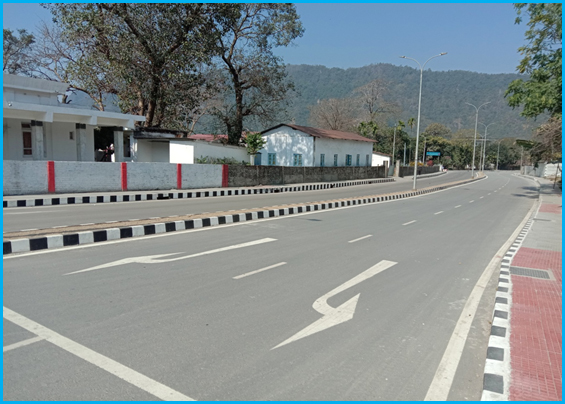
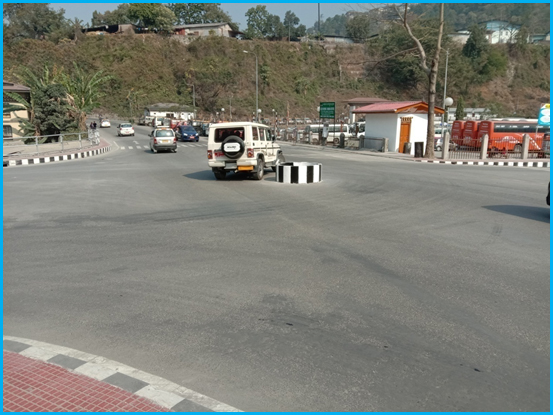

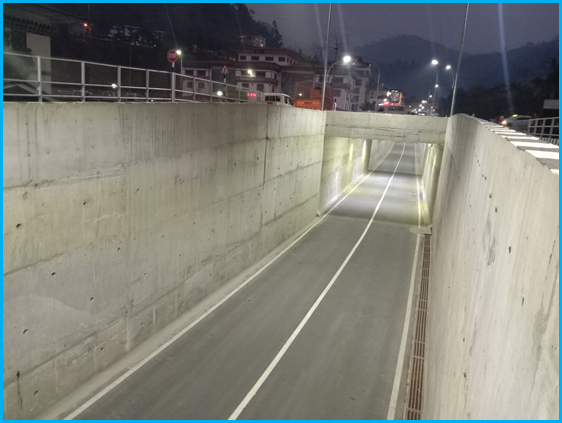
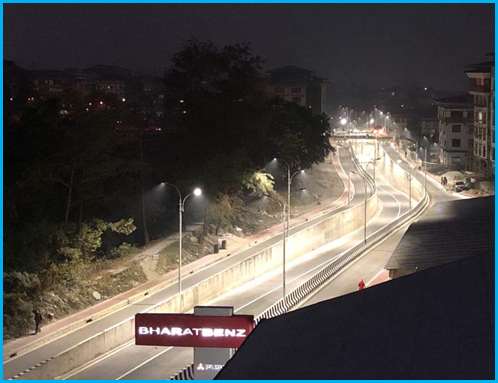
Northern bypass road-I
The Northern Bypass Road-I (NBR-I) in Phuentsholing, Bhutan, is a significant infrastructure project aimed at reducing traffic congestion and improving connectivity. Initiated in September 2017, the project was designed to provide an alternative route for heavy vehicles, diverting them from the city’s core areas. NBR-I spans approximately 2 kilometers and features a four-lane road that includes Bhutan’s first 40-meter underpass near the Omchhu bridge.
Northern bypass road-II
The Northern Bypass Road II (NBR-II) is a significant infrastructure project in Phuentsholing, Bhutan, aimed at enhancing urban mobility and reducing traffic congestion. This project is part of the South Asia Subregional Economic Cooperation (SASEC) Road Connectivity initiative, supported by the Asian Development Bank (ADB).
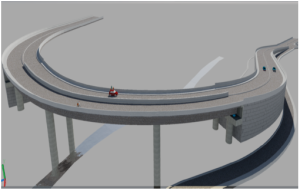
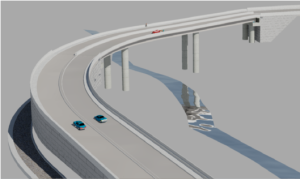
Ally land customs station
The LCS is located at Allay, Pasakha. It has an area of 3.86 acres. LCS will be further connected from India side as well (through ongoing Indian SASEC Road Project- this road project is already in construction phase).
The objective of developing LCS at Allay is to divert Pasakha bound Traffic (both entry and exit), directly towards Pasakha Industrial Area, through LCS, without having to detour Phuentsholing, thus reducing the heavy traffic in Phuentsholing.
Once, built and completed, vehicles plying from India to Pasakha Industrial area and vice versa will ply through Allay Land Custom Station. In future, all the formalities related to custom clearance and other allied activities will be conducted at LCS.
FUNCTION AND OBJECTIVES
Allay Land Customs Station is an inland intermodal terminal directly connected by road and operating as a centre for the transshipment cargo to inland destinations.
- To ease out traffic congestion at Phuentsholing town.
- Faster and smoother custom clearance





